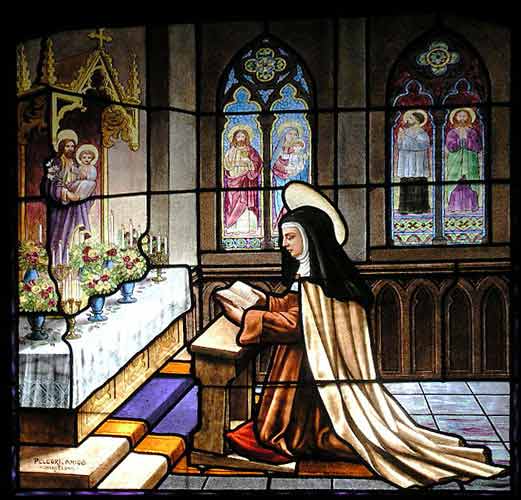On Thursday, I attended and spoke briefly at the launch of St. Paul University's Research Centre on the Second Vatican Council and 21st Century Catholicism, a venture to be shared with professors and researchers at Universite Laval (Quebec) and the University of St. Michael's College (Toronto).
Laval's Professor Gilles Routhier (far left in the photo below) spoke of the importance of this project as did St. Paul's leadership, including Professor Catherine Clifford (second from the right) who is head of the centre. Already a collection of essays on Vatican II has been; it is the volume being displayed by officials of the publisher (the University of Ottawa Press) and of the Centre.
Ottawa's francophone daily Le Droit wrote an account of the occasion (an excerpt follows below); their photographer took this lovely photo. Other photos of mine follow.
Vatican II et le catholicisme au xxie siècle
Un nouveau centre de recherche à St-Paul
Simon Cremer (Le Droit)
Il y a bientôt 50 ans, l'Église catholique a vécu l'événement le plus marquant de son histoire moderne : le deuxième concile oecuménique du Vatican.
Aujourd'hui, le sommet Vatican II et ses conséquences pour Rome sont l'objet d'un nouveau centre de recherche, à Ottawa, où primera la concertation entre les trois plus importantes facultés de théologie au Canada.
Le Centre de recherche Vatican II et le catholicisme au xxie siècle a été officiellement lancé hier, à l'Université Saint-Paul. Son objectif est de promouvoir l'étude de la théologie et de l'histoire de ce deuxième concile du Vatican.
L'archevêque d'Ottawa, Mgr Terrence Prendergast, était notamment en présence pour ce lancement. Plusieurs spécialistes de la théologie d'ailleurs au Canada et des États-Unis ont aussi assisté à l'événement.
« Nous devons présenter le concile à une nouvelle génération. Mes étudiants n'étaient pas nés lors de Vatican II. Il faut faire comprendre son importance à une nouvelle génération », explique Catherine Clifford, professeure agrégée à la faculté de théologie de l'Université Saint-Paul. Elle est l'une des artisanes de ce nouveau centre de recherche.
* * * * * *
SAINT TERESA OF AVILA

Teresa lived in an age of exploration as well as political, social and religious upheaval. It was the 16th century, a time of turmoil and reform.
She was born before the Protestant Reformation and died almost 20 years after the closing of the Council of Trent.
The gift of God to Teresa in and through which she became holy and left her mark on the Church and the world is threefold: She was a woman; she was a contemplative; she was an active reformer.
As a woman, Teresa stood on her own two feet, even in the man's world of her time. She was "her own woman," entering the Carmelites despite strong opposition from her father. She is a person wrapped not so much in silence as in mystery. Beautiful, talented, outgoing, adaptable, affectionate, courageous, enthusiastic, she was totally human. Like Jesus, she was a mystery of paradoxes: wise, yet practical; intelligent, yet much in tune with her experience; a mystic, yet an energetic reformer. A holy woman, a womanly woman.
Teresa was a woman "for God," a woman of prayer, discipline and compassion. Her heart belonged to God. Her ongoing conversion was an arduous lifelong struggle, involving ongoing purification and suffering. She was misunderstood, misjudged, opposed in her efforts at reform.
Yet she struggled on, courageous and faithful; she struggled with her own mediocrity, her illness, her opposition. And in the midst of all this she clung to God in life and in prayer. Her writings on prayer and contemplation are drawn from her experience: powerful, practical and graceful. A woman of prayer; a woman for God.
Teresa was a woman "for others." Though a contemplative, she spent much of her time and energy seeking to reform herself and the Carmelites, to lead them back to the full observance of the primitive Rule. She founded over a half-dozen new monasteries. She traveled, wrote, fought—always to renew, to reform. In her self, in her prayer, in her life, in her efforts to reform, in all the people she touched, she was a woman for others, a woman who inspired and gave life.
Her writings, especially the Way of Perfection and The Interior Castle, have helped generations of believers.
In 1970, the Church gave her the title she had long held in the popular mind: doctor of the Church. She and St. Catherine of Siena were the first women so honored.
Quote: Teresa knew well the continued presence and value of suffering (physical illness, opposition to reform, difficulties in prayer), but she grew to be able to embrace suffering, even desire it: "Lord, either to suffer or to die." Toward the end of her life she exclaimed: "Oh, my Lord! How true it is that whoever works for you is paid in troubles! And what a precious price to those who love you if we understand its value." (www.americancatholic/saintoftheday)







Was this Centre created to promote the hermeneutic of continuity of our Holy Father which seek to reinterpret Vatican II in accordance with Catholic Tradition, or is it a counter-measure seeking to perpetuate the errors rooted in a liberal interpretation of the council?
ReplyDelete